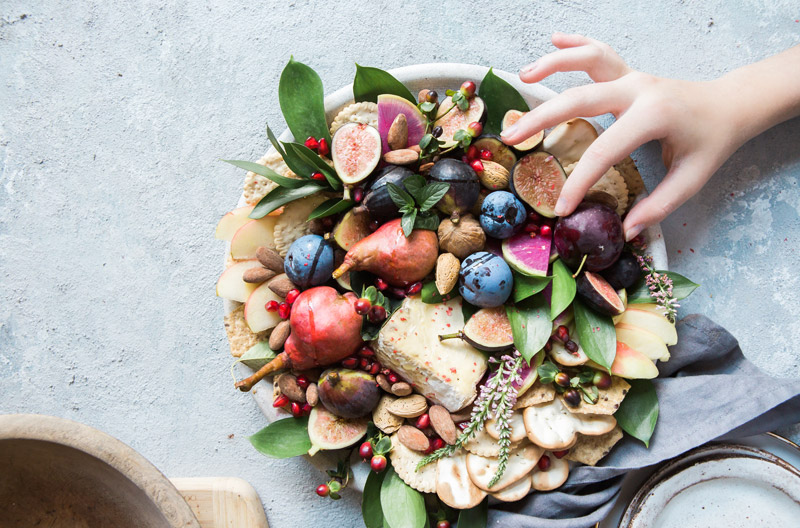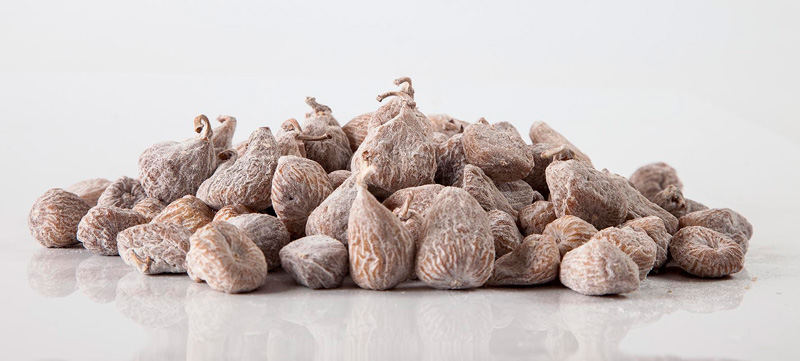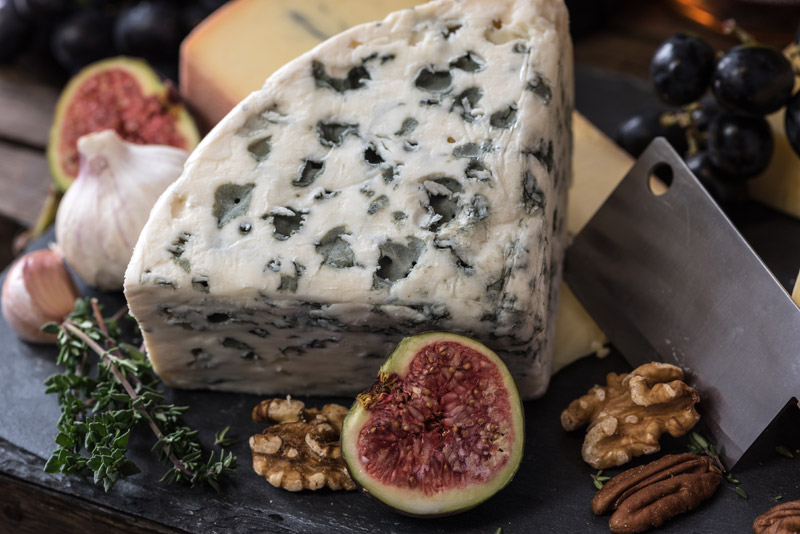
A few days ago, in the first part of this article, we told you about the importance of potassium intake for your health. Today we bring you the second and final part.
We all know that potassium is important for our health, but do we know how much we should consume every day? This time, we will focus on the recommended intake and list some of the main foods high in potassium, especially fruits :)
In many cases, most people don't think about this mineral until they are diagnosed with an electrolyte imbalance. As we told you in part one, potassium is essential for maintaining fluid balance, transmitting nerve impulses and contracting muscles. It also helps keep blood pressure under control and may reduce the risk of heart disease and stroke. As well as being found in many leafy green vegetables, potassium is present in other healthy foods such as figs, oranges, yoghurt, salmon and avocados. Below is a more detailed explanation of how much potassium we need each day and some tips for getting more potassium in our diet.
How much potassium should we consume each day?
What we eat has a direct impact on our overall health. Eating the right foods helps maintain the right level of potassium, which is essential for healthy cell function. By eating a balanced diet, we can help our bodies stay strong and prevent disease.
The amount of potassium needed depends on age and gender. According to the National Institutes of Health (NIH), part of the US Department of Health and Human Services, the average recommended daily amounts are:
- Children 1 to 3 years old: 2,000 mg.
- Children 4 to 8 years old: 2,300 mg
- Boys 9-13 years: 2,500 mg
- Girls 9-13 years: 2,300 mg
- Adolescents 14-18 years (boys): 3,000 mg
- Adolescents 14-18 years (girls): 2,300 mg
- Adults 19 years and older (men): 3,400 mg
- Adults over 19 (women): 2,600 mg
- Pregnant women: 2,900 mg
- Breast-feeding women: 2.800 mg
It is important for the general population to get their daily dose of potassium. As mentioned at the beginning, potassium is found in many foods. In addition to those mentioned in the first part of this article https, it is also found in green leafy vegetables. Dried fruits such as figs, prunes, apricots, sultanas, walnuts. Also Bananas, oranges. Meat, poultry and fish. Milk, yoghurt. Lentils, soybeans, sweet potatoes, and many others.
Is the banana the fruit that provides us with the most potassium?
For generations, in many cities around the world, the banana has been associated with the fruit that contains the most potassium. Surely if you remember your childhood, the words of your parents or grandparents will resonate when they insisted that you should eat at least one a day. In reality, there are fruits that provide even higher amounts.
Here is a list of the fruits that, according to the Spanish Nutrition Foundation (FEN), have the highest amount of potassium:
Coconut
It is the fruit richest in potassium according to the FEN (Spanish Nutrition Foundation), providing 405g in 100 grams, although it also has the highest amount of saturated fatty acids and its consumption is recommended in small portions. Another advantage of coconut is that it contains selenium and iron.
Avocado
Avocado is a very nutritious fruit that provides a lot of nutrients. A medium avocado contains 400 mg of potassium per 100 grams, which puts it in second place. It also helps us to maintain heart health and provides us with vitamin E.
Custard apple
Third place goes to a fruit that provides 382 mg of potassium and represents 13% of our recommended intake. Compared to other fruits, custard apple has a high amount of carbohydrates (20%) and is a source of vitamin C.
Banana
As you can see, it is not in the first place as it provides us with 350 mg of potassium. Bananas are rich sources of this essential nutrient. It also includes carbohydrates (20%). This fruit also provides 30% of the daily requirement of vitamin B6.
Figs
El Pajarero dried figs provide 200mg of potassium per 100 grams of fruit. In addition to calcium, iron and magnesium. It has all the essential amino acids and a large amount of fibre. It has small amounts of vitamin B6 and thiamine.
There are many fruits that also contain high doses of potassium such as grapefruit, melons, apricots, kiwis, peaches, among others.
Potassium is an important mineral that our body needs to function properly. There are many foods high in potassium that can help us achieve this goal. Next time you go shopping, be sure to include some of these potassium-rich foods on your shopping list.
By the way, what is your favourite potassium-rich food?
Ours, dried figs :)

Magnesium is an essential micromineral that plays a crucial part in the basic fundamental structural function in human beings. Since it’s present in bones, its balance becomes basic for an adequate function of our organism.
Furthermore, it also regulates our system, we can find magnesium’s implication in many reactions of energy acquisition inside our cells. This micromineral also contributes to the normal functioning of muscle tissue.
In which part of our bodies is magnesium present?
Magnesium is present in our human bodies, basically in muscle and bone tissue. At the same time, although in small quantities, it is present in our bloodstream and red blood cells. That's why it’s important to assure proper levels of magnesium in our diets.
What food should we consume regularly to get adequate levels of magnesium?
To obtain a good level of magnesium, we can find this micromineral in food such as dried figs, avocados, nuts such as almonds, cashews or pistachios, some seeds such as pumpkin, flax or sesame, unsweetened cocoa powder, white corn, snails, oily fish, herbs and spices, fruits such as grapefruit or lemon, dark bitter chocolate and berries, to cite the most obvious examples.
It should be noted that its multifunctionality means that it comes to play a more or less prominent role in more than 300 reactions that occur in our body, although we may not be aware of them. Just to name a few examples, you will find magnesium in:
- Muscle contraction
- Protein synthesis
- Maintenance of healthy teeth, heart and bones
- Supporting protein formation
- Oxygen transport
- Energy metabolism
- Immune functions
- The intervention of the nervous contraction and in the nervous transmission.
It is therefore of vital importance to ingest the foods mentioned previously. Although in most cases, those who are most concerned about maintaining the correct levels of magnesium are athletes, especially runners,we should all be aware of the consumption of food with magnesium.
What are the consequences of magnesium deficiency?
A large enough magnesium deficiency can cause structural damage to muscle cells, so we can get tired earlier and suffer more fatigue, we can encounter metabolic problems when normal energy is being produced or even, without this micromineral, we could lose the electrolyte balance in our body.
Other effects of a lack of magnesium in our body can be irritability, convulsions, decreased appetite or weakened muscles.
On the other hand, it is important to know that the use of magnesium is particularly useful for people who do sports, who have a high rate of sweating or who train under intense hot weather conditions. Our body eliminates excess magnesium by itself.
Consuming natural foods such as dried figs (you can find them almost all year round), some nuts, some citrus fruits, avocados (and others mentioned above) can help you get the magnesium levels your body needs. Consult your doctor to know your needs and maintain them properly.

Dried figs can be enjoyed through the better part of the year, as well as their multiple health benefits. This is due to their exceptionally dense nutritional composition.
Dried figs vs. fresh figs
While fresh figs are very popular for their juicy and delicious texture, they are a delicate fruit and are only available for a short period of time each year. Fresh figs are only good for 1-2 weeks after being harvested, and are best enjoyed when eaten within a few days.
Dried figs, on the other hand, can be savored for much of the year. They have a much longer shelf life than fresh figs. They originate from the Middle East, but are also cultivated in many countries. In fact here in Spain, Extremadura is one of the best areas, and it is precisely where our dried figs El Pajarero come from.
Dried Figs: Nutrition
Dried figs contain an impressive nutritional range, including high levels of protein, carbohydrates, calcium, vitamin K, potassium, iron and magnesium. In terms of dietary fiber, dried figs have a higher content than any other fruit. Half a cup of dried figs contains almost 200 calories and have barely any fat content. These dried fruits also offer several antioxidants and active ingredients to further improve your health. There are also traces of omega-6 fatty acids, glutamic acid and linoleic acid.
Nutritional Information
The following nutritional information corresponds to 100 grams of raw dried figs
Nutritional value
Water [g] 30.05
Energy [kcal] 249.00
Protein [g] 3.30
Total lipids (fat) [g] 0.93
Carbohydrates, by difference [g] 63.87
Fiber, total diet [g] 9.80
Sugars, total [g] 47.92
Calcium, Ca [mg] 162.00
Iron, Fe [mg] 2.03
Magnesium, Mg [mg] 68.00
Phosphorus, P [mg] 67.00
Potassium, K [mg] 680.00
Sodium, Na [mg] 10.00
Zinc, Zn [mg] 0.55
Vitamin C, ascorbic acid, total [mg] 1.20
Thiamine [mg] 0.09
Riboflavin [mg] 0.08
Niacin [mg] 0.62
Vitamin B-6 [mg] 0.11
Folate, DFE [µg] 9.00
Vitamin B-12 [µg] 0,00
Vitamin A, RAE [µg] 0,00
Vitamin A, IU [IU] 10.00
Vitamin E (alpha-tocopherol) [mg] 0.35
Vitamin D (D2 + D3) [µg] 0.00
Vitamin D [IU] 0.00
Vitamin K (phylloquinone) [µg] 15.60
Fatty acids, total saturated [g] 0.14
Fatty acids, total monounsaturated [g] 0,16
Fatty acids, total polyunsaturated [g] 0.35
Cholesterol [mg] 0.00
Caffeine [mg] 0.00
Source: USDA
If you want to know the benefits of dried figs, click here.

At Higos El Pajarero we want to share with you one of the secrets of a healthy diet that allows you to be in optimal shape: the consumption of dried figs. These little delicacies are full of properties, vitamins, minerals and other substances with which you will get a perfect health, so get ready to know them a little more.
Properties
The first thing you need to know is the amount of properties that dried figs El Pajarero have. For starters, they are rich in some of the most important minerals for your body. Without going any further, these fruits, when dried, contain large amounts of iron, although this is not their only advantage. On the contrary, calcium and magnesium are also very abundant in figs presented in this way, so they are most suitable to help alleviate many deficiencies in the body.
However, this food also contains a good amount of vitamins that you should not lose sight of. For example, various types of vitamin B are found in high concentrations in this dried fruit, which is ideal for your body health.
Healthy eating
Taking into account these characteristics, it is easy to guess that dried figs are ideal to be able to eliminate certain pathologies. For example, cases of anemia have in this fruit a powerful all-natural medicine due to the presence of iron and vitamin B.
Digestive disorders, especially those with symptoms such as constipation and even heartburn, can also find a solution in the consumption of figs El Pajarero. The reason is none other than the abundant amount of fiber that a regular consumption of this fruit provides, a completely necessary element to enjoy life in a healthy way.

Figs are usually a perfect accompaniment to cheeses, so today we would like to suggest four ways of combining them: blue cheese, fresh cheese, goat cheese and aged cheese. In some of these combinations, some other ingredients are added, but the main ingredients are dried figs and cheese. Let's get started!
Figs with goat cheese
A winner combination. If you want to surprise your guests with a quick and delicious recipe, we suggest two alternatives, either hot or cold.
The combination of figs with warm goat cheese consists in opening some dried figs and introducing a teaspoon of goat cheese in each one. The amount will depend on the size of the fig, but it must be enough to be able to close it. Once closed, place the figs with goat cheese in the oven at 180º for approximately 10 minutes. You can serve it on freshly made toast.
If you prefer eating it cold, just open the dried figs in half, put some goat cheese and, if desired, add a drop of balsamic vinegar (it will go great). You can add pistachio nuts and besides giving it a new texture, it enhances the flavor.
Figs with blue cheese
Specifically, Niki Segnit in The Encyclopedia of Flavors recommends combining figs with stilton cheese and a glass of oporto. She also recommends combining figs with blue cheese in a salad with hearty leaves, also drizzled with a vinaigrette of oporto, olive oil and balsamic vinegar.
Figs with fresh cheese
Between July and August, in fig harvesting season, figs are usually eaten for breakfast accompanied by fresh cheese and some nuts. When fresh figs are not in season, dried figs are very pleasurable when eaten with fresh cheese and honey regardless. If you like sweet and sour, you will love this combination.
Figs with aged cheese
Are you daring enough to combine dried figs with a good Manchego? The association responsible for the famous Parmigiano-Reggiano cheese recommends pairing young Parmesan cheese with dried figs and hazelnuts. And if you add to this combination a good Serrano ham, the combination becomes otherworldly
What's your favorite combination?

Christmas is a perfect opportunity to pamper the ones we love, and one of the best ways to do it is to show our affection by preparing delicious dishes, desserts and cakes. The best thing about them is sharing these plates, still steaming, with a nice cup of hot chocolate while telling stories :-) Doesn't it sound good?
Today we bring you a dried fig and date pudding which will make everyone fall in love with your cooking and crown you as the most luxurious host :-) You can also prepare it as a gift or take it to a Christmas dinner to share it along with nougat, panettone and all the delicacies that we crave so much after dinner. Below we explain what we will need for the dried fig pudding and the steps to follow for its preparation. It's very easy.
Ingredients for 8 people
- 100 g brown sugar
- 200 g butter
- 4 eggs
- 75 g pitted dates
- 75gr raisins
- 75 g dried figs
- Grated zest of one orange
Preparation
Before mixing the ingredients, the first thing to do is to preheat the oven at 180ºC.
Let's begin. First, beat the butter and the sugar together. Then add the egg yolks one by one, then the dried figs, the raisins, the pitted dates and the orange zest. Next add the flour and stir so that everything comes together well. Afterwards, beat the four egg whites until stiff. Finally, pour the mixture into a pudding mold and bake it for approximately 50 minutes.
If you want to give it a special touch, dip a cloth in cognac or rum and then wrap it around the pudding. Then cover everything in aluminum foil and keep it for up to two weeks in a dry and dark place.
Enjoy!

Did you know that dried figs have a lot of fiber, calcium, and magnesium? That’s why it's good to eat them everyday. Not only are they a tasty snack, but they offer a good amount of vitamins and minerals.
Fresh figs season is about to end, but fortunately dried figs can be found pretty much all year round in a lot of grocery stores. In fact, our own figs, Drie
d Figs El Pajarero, are sold at most grocery stores. :-)
Natural and healthy snack
Dried figs El Pajarero, are a delicious and healthy snack that anyone and everyone can enjoy anywhere. They are rich in potassium, which helps prevent muscle cramping and low arterial pressure. So in case you do any sports, these will come in handy.
Furthermore, dry figs have the same amount of fiber as a serving of oats. So, next time you’re looking for a healthy snack to carry around dried figs won’t disappoint you!
Here you have 5 ideas to include them in your diet
1) Add dried figs to your oats, to get an extra boost of nutrients.
2) Use dried figs instead of raisins for your favorite cookie recipe
3) Mix dried figs with nuts and seeds to obtain a healthy snack
4) Add chopped dried figs to your salads in order to get a sweet flavor and crunchy texture
5) To add some sweetness to your yogurt, add some minced dried figs
How do you eat your dried figs? Do you combine them with other ingredients?
We hope you enjoyed this post about how to include dried figs in your diet. If you wish to get more information about dried figs and how it affects your health and nutrition here you will find more information. And if what you’re looking for are recipes that include dried figs, you can find plenty here.
If there's any other topic related to health and nutrition that you’re interested in, tell us about it: we’ll be delighted to keep uploading content!

You can now find dried figs in many grocery stores, eat them to take care of your health as well as enjoying them, as they contain huge doses of magnesium, phosphorus, calcium, potassium, etc. Today we will tell you about some of the benefits magnesium has.
Magnesium is one of the most abundant elements in the planet, it’s essential for many physiological processes in the human body. Remember 100 grams of dried figs count for 12% of the daily medium value recommended.
On the other hand, the medium daily value of magnesium we need is over 400 milligrams and is not hard to obtain if you have a varied and equilibrated diet, as it is a very abundant element. Nonetheless, meeting this dosage can be hard if you stray away from the typical mediterranean diet.
This alcaline element is the seventh most abundant in all of planet earth, representing 2% of the earth's crust and is the third most prevalent element found in liquid form after chlorine and sodium. This fact can make us realize how important it is on the physiological processes of living beings, one of them being muscular regulation.
This is the most important mineral for muscular contraction. Without magnesium, there is a chronic deficit and cramps can become much more frequent. It’s presence is essential to some extent so muscular contraction can be regulated properly.
It also intervenes in electrical impulse transmission in different ways, as it also does in protection of DNA and RNA when they are exposed to change. It also forms many coenzymes for important functions.
It’s also a basic mineral for our gut flora, and it’ll be used so our intestinal functions work properly, that’s why magnesium intake must always be above minimum, so it can travel through our intestines and feed our flora. It must be said that 60% to 70% of magnesium travels through our intestines. On the other hand, magnesium is considered essential so that phosphorus and calcium will bind with our bones and teeth, therefore phosphorus and calcium rich foods without magnesium are not effective to fixate these minerals.
But magnesium’s strengths don’t end there, as low levels of plasmatic magnesium are related with anxiety and depression, without any concrete proof. What’s clear is that it’s a crucial mineral that must be very present in our diet or we put ourselves at risk of suffering deficiencies with symptoms such as muscle cramps, anxiety, insomnia, dental problems, bone breakage or even in extreme cases neuronal syndromes like convulsions or spasms, specially in alcoholic or depressed people.
What’s most important is having present that if you want to take care of yourself through a rich, varied and equilibrated diet a little dose of dried figs, along other food products like legumes, whole grains, blue fish, dairy, dried fruits, fatty fruits, dark chocolate, raisins and asparagus, can offer the dose needed to achieve the medium daily value of magnesium. Don’t base your diet in ultra processed or empty food. With an adequate diet you can take care of yourself naturally. And don’t forget dried figs…

Dried figs bring much more than six benefits. Here we list and explain some of them.
- Heart health
- Alkaline formation
- Healthy hair
- Constipation
- Hypertension and Blood Pressure
- Rich in magnesium
Heart health
Dried figs are very low in sodium, but they have high levels of potassium and magnesium. These nutrients work in lowering arterial pressure and in the meantime, the dietetic fiber aids in lowering cholesterol. Antioxidants in figs help prevent the accumulation of plaque on arteries and veins.
Alcaline formation
One of the main benefits of eating dried figs is that they help provide a good alkaline environment for your body, which is important to prevent acidity and inflammation. Some nuts or other dried fruits are processed and actually promote inflammation, but dried figs are an exception to that. An alkaline body can help raise your energy levels and general health.
Healthy hair
Unhealthy hair usually happens when minerals and vitamins in your body are limited. Consuming 4 to 5 drieds figs a day is one of the best ways to achieve follicle health, providing them with the minerals and vitamins they need.
Dried figs help with constipation
Eating 2 to 3 dried figs daily after every meal, not only helps bring your vowel system to a normal functioning, but also helps with gastritis. Eating them on an empty stomach helps the body get rid of any worms and cleans the veins in all of your body.
Hypertension and Arterial Pressure
The high contents in potassium and low contents on sodium of dried figs is a perfect combination to help fight against hypertension and helps keep blood pressure in check. It also contains some elements that can aid in soothing your nerves.
A great source of magnesium
Dried figs are full of magnesium, which is a trace element necessary to keep many enzymatic reactions essential for energy production and a strong immune system.

In Higos Secos El Pajarero we want to share with you one of the greatest secrets for a healthy diet that will allow you to be in shape: the consumption of dry figs. These little delicacies are full of great properties,vitamins, minerals and many other substances which will give you great health, so get ready to get to know them a bit better.
Properties
The first thing you should know is that the figs El Pajarero have many properties. For starters, they are rich in some of the most important minerals for your body. In fact, these fruits when dry contain great quantities of iron, although it’s not their only advantage. On the contrary, calcium and magnesium are also greatly abundant in dry figs, and so they end up being great to make up for vitamins and minerals you’re not getting.
This food also contains a good quantity of vitamins that you shouldn’t ignore. For example, multiple kinds of vitamin B can be found in high doses in this dry fruit, something ideal for your health.
A healthy diet to prevent illness
Keeping in mind all of these characteristics, it’s easy to guess that dry figs are ideal to aid some pathologies. For example, anemia can be mitigated in a natural way because of the powerful doses of iron and vitamin B. Digestive issues, especially the ones that can cause constipation or acidity, can be fixed by consuming figs El pajarero. That’s because of the fiber that regular consumption of this food can give to your body, an element completely necessary to enjoy a healthy life.





